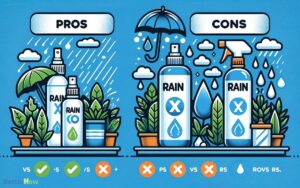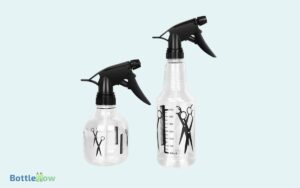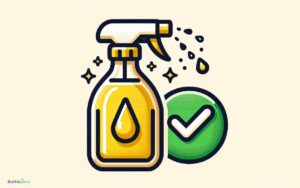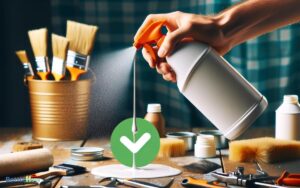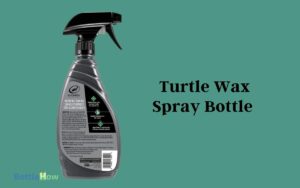Can You Reuse Cleaning Spray Bottles? Yes!
Yes, you can reuse cleaning spray bottles, but you need to do it thoughtfully to minimize environmental impact and maintain safety. Most are made from PET or HDPE, both of which can handle certain recyclings.
Before refilling, make sure the new contents are chemically compatible with the plastic and thoroughly clean the bottle to remove any residual chemicals. This prevents pollution and guarantees the effectiveness of the new solution.
Remember to label the new contents clearly to avoid any confusion or mishaps. This practice supports sustainability by reducing plastic waste and conserves natural resources. More tips and guidelines follow for ensuring safe and ecological reuse.
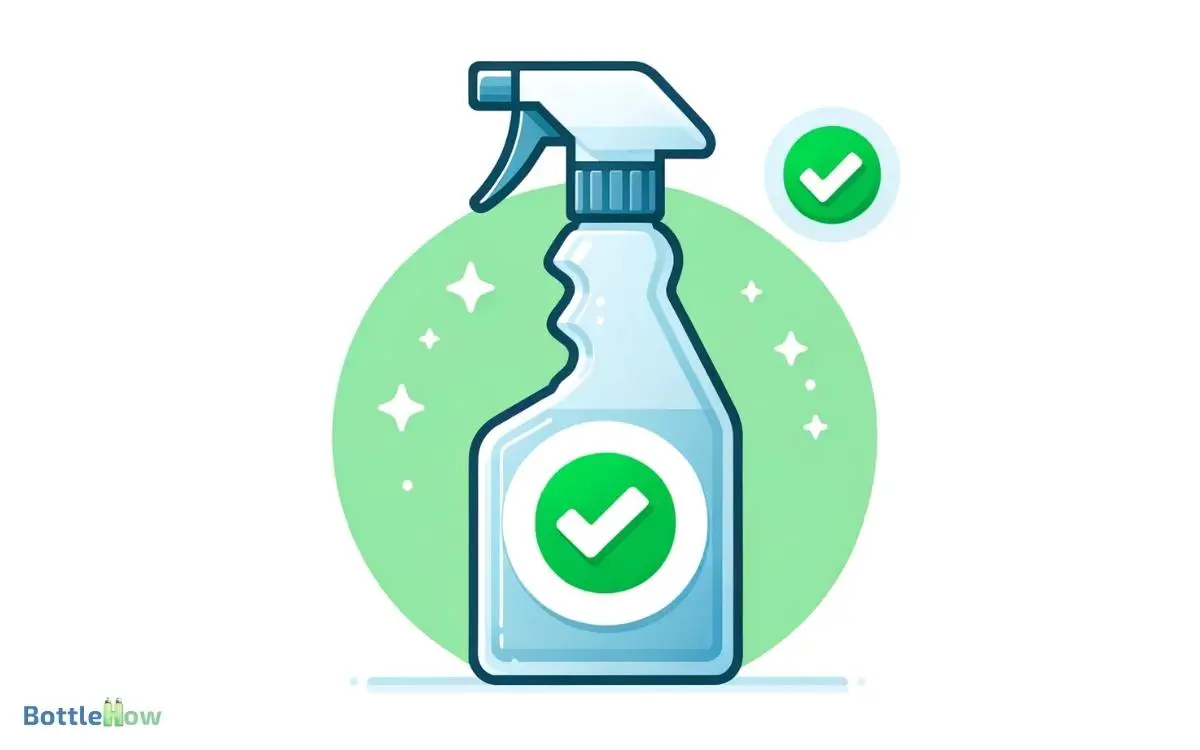
Key Takeaways
Understanding Plastic Composition
Before you reuse a cleaning spray bottle, it’s important to understand the bottle’s plastic composition, as this determines its safety and recyclability.
Most cleaning spray bottles are made from polyethylene terephthalate (PET) or high-density polyethylene (HDPE), both of which are considered highly recyclable.
When you’re aiming to serve your community by reducing waste, knowing these materials helps in making informed decisions about recycling. PET, for instance, is clear and tough, making it suitable for a single recycling loop without degrading its quality.
HDPE, on the other hand, is known for its strength and resistance to chemicals and moisture, ensuring it can endure multiple recycling processes. Recognizing these properties enables you to contribute to sustainability efforts effectively.
Safety Concerns With Reuse
When reusing cleaning spray bottles, it’s important to take into account potential safety concerns, such as chemical residue and material degradation.
Over time, the integrity of the bottle can be compromised, which mightn’t only affect its performance but also pose health risks if used improperly.
Here are some key points to bear in mind:
- Chemical Compatibility: Confirm that the materials of the bottle are compatible with new contents to prevent chemical reactions.
- Material Breakdown: Plastics can degrade, potentially releasing harmful particles into new solutions.
- Label Confusion: Old labels might cause confusion, leading to misuse or dangerous mixing of chemicals.
Being mindful of these factors helps promote a safe environment while supporting sustainable practices.
Cleaning Bottles Thoroughly
To guarantee a safe reuse of cleaning spray bottles, it’s essential that you thoroughly clean and rinse them to eliminate any residual chemicals.
This step is vital not only for your safety but also to confirm the effectiveness of the new solutions you’ll use. Proper cleaning also prevents the pollution of our environment, aligning with eco-friendly practices.
| Emotion | Impact on Your Actions |
|---|---|
| Responsibility | Motivates thorough cleaning to ensure safety and environmental protection. |
| Diligence | Encourages meticulous attention to detail in the cleaning process. |
| Concern | Highlights the importance of preventing chemical mixtures. |
| Mindfulness | Promotes awareness of chemical residues and environmental impact. |
| Satisfaction | Provides peace of mind knowing you’re contributing positively. |
This eco-conscious approach not only preserves the integrity of your bottles but also supports a healthier planet.
Types of Cleaners to Avoid
When reusing your cleaning spray bottles, you must be cautious about the original contents they held, particularly if they contained corrosive chemicals. These substances can pose risks even after the bottle is cleaned, as residues might react with new solutions. To ensure safety, always thoroughly rinse and dry bottles before using them for different cleaning solutions. For instance, if you put Fabuloso in a spray bottle that previously contained a harsh chemical, any lingering residue could cause dangerous reactions. It’s best to label bottles clearly and designate them for specific products to avoid unintentional mixing.
Additionally, avoid reusing bottles that held cleaners with organic materials, which can degrade and contaminate your new cleaning solutions.
Corrosive Chemical Risks
Avoiding the reuse of spray bottles that once contained corrosive cleaners is essential, as these substances can degrade the bottle’s integrity and pose safety risks.
Corrosive chemicals, often found in some household cleaners, can leave behind residues that not only compromise future contents but also harm the environment when disposed of improperly.
- Drain Cleaners: Highly alkaline or acidic, they can weaken plastic, causing leaks that might go unnoticed until it’s too late.
- Oven Cleaners: Contain potent chemicals designed to dissolve tough baked-on grime, which can continue to corrode the bottle.
- Toilet Bowl Cleaners: Typically contain harsh acids or chlorine, which can etch or brittle the plastic over time.
Always consider the long-term impact of your choices on both safety and sustainability.
Organic Material Concerns
While avoiding bottles that held corrosive chemicals is essential, you should also consider the hazards of reusing bottles that contained cleaners with organic materials.
These cleaners often include food-based ingredients, essential oils, or other biodegradable components that can decompose.
This decomposition isn’t just about a bad smell; it can foster the growth of bacteria and mold if any residue remains in the bottle.
When you’re aiming to serve others by maintaining a clean and healthy environment, it’s vital to make sure that your tools don’t become sources of contamination themselves.
If you’re unsure about the cleanliness of a bottle, it’s safer to recycle it rather than risk compromising your efforts with potentially harmful bacteria.
DIY Cleaner Recipes
You can create effective and eco-friendly cleaning solutions using simple ingredients like vinegar and baking soda. These natural cleaners aren’t only kind to the planet but also gentle on your wallet.
By mixing your own cleaners, you’re reducing chemical exposure and promoting a healthier environment at home.
- All-Purpose Cleaner: Combine equal parts water and vinegar, add a few drops of essential oil for fragrance.
- Glass Cleaner: Mix 1 part vinegar to 4 parts water. Use a soft cloth to avoid streaks.
- Scrubbing Paste: Make a paste with baking soda and water for tough grime.
These simple recipes empower you to maintain a clean, safe home while actively reducing your ecological footprint and supporting community health initiatives.
Reusing for Non-Cleaning Purposes
Repurposing old cleaning spray bottles for non-cleaning uses can greatly reduce plastic waste and extend the lifecycle of these containers. You’re not just saving money; you’re actively participating in environmental stewardship.
Consider using these bottles to water plants, which demands a gentle touch and controlled water flow that spray bottles provide perfectly.
You can also fill them with homemade cooking oils infused with herbs or spices, offering a practical way to dispense small amounts during cooking without waste.
Another thoughtful use is creating a feeding station for birds by filling bottles with seeds; it’s a simple yet effective method to help nourish wildlife in your area. Each of these alternatives serves the community and environment, aligning with a deeply eco-conscious approach.
Labeling Reused Bottles
Why should you label your reused spray bottles?
It’s essential for safety and efficiency. When reusing bottles, especially in environments where you serve others, clear labeling guarantees that everyone knows the contents, preventing accidental misuse and promoting responsible handling.
- Safety First: Clearly labeled bottles prevent accidents caused by mixing or misusing chemicals.
- Efficiency in Service: In a setting where multiple people might use the cleaning supplies, labels help everyone quickly find what they need without confusion.
- Regulatory Compliance: Some jurisdictions require that all containers, even reused ones, must be labeled with their contents for health and safety reasons.
Being meticulous about labeling not only demonstrates your commitment to safety but also enhances the functionality and professionalism of your service environment.
Environmental Impact of Reuse
When you reuse cleaning spray bottles, you’re actively reducing the amount of plastic waste that ends up in landfills and oceans.
This practice not only conserves resources but also lowers your carbon footprint by minimizing the demand for new plastic production.
Each reused bottle signifies a small, yet significant step towards a more sustainable planet.
Reduces Plastic Waste
Reusing cleaning spray bottles greatly reduces the amount of plastic waste that ends up in landfills and oceans.
Each time you refill a bottle instead of purchasing a new one, you’re actively participating in waste reduction. This simple act is a significant step towards environmental stewardship, a responsibility that benefits both the planet and its inhabitants.
Consider these compelling reasons to reuse your spray bottles:
- Conserves Resources: Minimizes the need for new plastics, which require fossil fuels and other natural resources.
- Reduces Pollution: Fewer bottles produced means less industrial pollution.
- Promotes Sustainability: Supports a cycle of reuse that can be maintained indefinitely, reducing overall environmental impact.
Lowers Carbon Footprint
By reusing your cleaning spray bottles, you greatly lower your carbon footprint, directly impacting global emissions reduction efforts.
Each time you refill a bottle, you’re decreasing the demand for new plastics, which requires fossil fuel extraction and processing both major pollution and greenhouse gas emission sources.
Manufacturing new bottles also involves significant energy consumption, primarily from non-renewable sources. By opting for reuse, you’re cutting down on the energy used and the emissions released into the atmosphere.
This action not only conserves resources but also supports a vital model of consumption that can be essential in combating climate change.
You’re contributing to a healthier planet, serving both the environment and future generations with your conscientious choices.
When to Recycle Instead
You should recycle your cleaning spray bottles if they’re cracked, warped, or extensively worn. This step not only guarantees your safety but also contributes to environmental sustainability.
When bottles are no longer suitable for reuse, recycling them is an effective way to minimize waste and reduce the consumption of new resources.
- Resource Conservation: Recycling plastic reduces the demand for new plastic, conserving oil and energy.
- Waste Reduction: Proper recycling prevents plastics from ending up in landfills and oceans, reducing environmental pollution.
- Community Impact: Participating in recycling programs supports local waste management and promotes community health.
Always check with your local recycling guidelines to ensure correct disposal and to maximize the positive impact of your efforts.
Creative Reuse Ideas
Why not transform your old cleaning spray bottles into practical, eco-friendly tools for your home and garden? By repurposing these bottles, you’re not only reducing waste but also creating valuable tools that can serve multiple purposes.
For instance, you can fill them with homemade plant feeds or water for misting your indoor plants, ensuring they receive a gentle, even coverage that promotes health and growth.
Additionally, consider using these bottles for your DIY cleaning solutions. Mixing vinegar, water, and essential oils in an old spray bottle provides you with an effective, non-toxic cleaning option that’s kind to the environment and safe for your family.
This approach not only saves money but also aligns with a sustainable lifestyle, embodying care for your community and the planet.
Conclusion
Reusing your cleaning spray bottles is a smart move for both the environment and your wallet. By refilling them with DIY cleaners, you avoid the waste of single-use plastics and reduce the demand for new resources.
Always make sure bottles are thoroughly cleaned and properly labeled to avoid chemical mix-ups. However, if the bottle is damaged or can’t be cleaned properly, recycling is the next best option.
Embrace this simple practice to contribute positively to a more sustainable planet.

